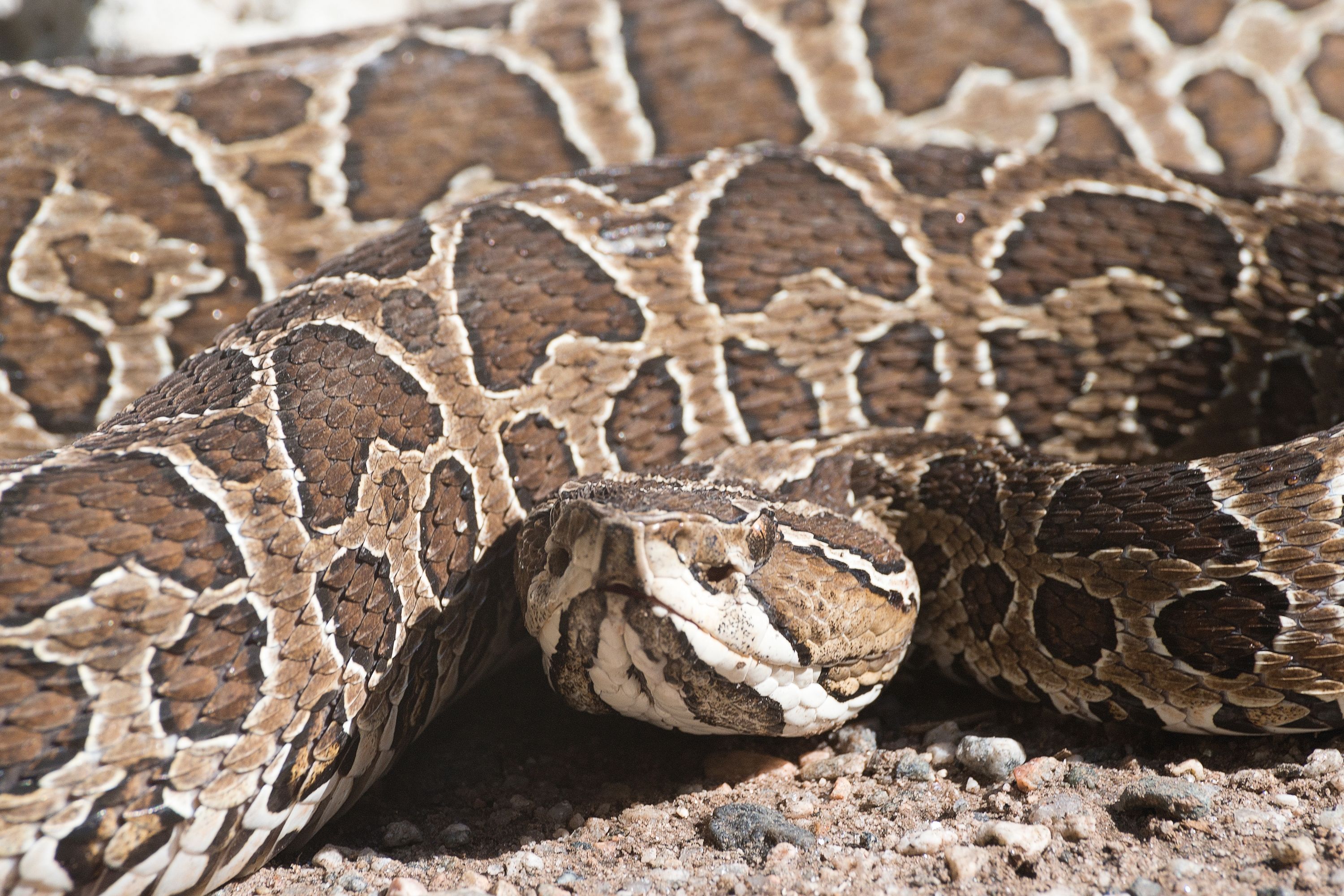Urutu
(Bothrops alternatus)

Description
Bothrops alternatus is a highly venomous pit viper species found in South America (Brazil, Paraguay, Uruguay and Argentina). Within its range, it is an important cause of snakebite. The specific name, alternatus, which is Latin for "alternating", is apparently a reference to the staggered markings along the body. No subspecies are currently recognized. Large and stout, this terrestrial species reportedly exceeds 2 m (6.6 ft) in total length, although the verified maximum is 169 cm (67 in). Most specimens are 80–120 cm (31–47 in) in total length, with females being significantly longer and heavier than males. The scalation includes 25-35 (usually 27-31/29-33 in males/females) rows of dorsal scales at midbody, 155-183/164-190 ventral scales in males/females, and 38-53/30-44 subcaudal scales in males/females. On the head there are 8-13 strongly keeled intersupraocular scales, 8-10 supralabial scales, none of which are fused with the prelacunal, and 12-14 sublabial scales. The color pattern is exceedingly variable. The ground color may be brown, tan or gray, sometimes with an olive cast. The top of the head is usually chocolate brown to almost black with a range of transverse and longitudinal tan to white markings. On the body, there is a series of 22-28 dorsolateral markings that are chocolate brown to black in color and boldly bordered in cream or white. Along the vertebral line, these markings may either oppose or alternate. Each marking is widened and invaded from underneath by the paler ground color so that it either looks like a cross, encloses a darker blotch, or divides the marking into three parts to give it the shape of a headphone. On the tail, the pattern fuses to form a zigzag pattern. In some specimens, the pattern is so concentrated that there is no difference in color between the markings and the interspaces. The ventral surface includes a dark brown to black stripe that starts at the neck and runs down to the tail tip. Aberrant specimens, described by Lema (1960, 1987), had dark dorsal stripes running down the length of the body. Occurs in tropical and semitropical forests, as well as temperate deciduous forests. According to Gallardo (1977), it prefers marshes, low-lying swamps, riparian zones and other humid habitats.
Taxonomic tree:







